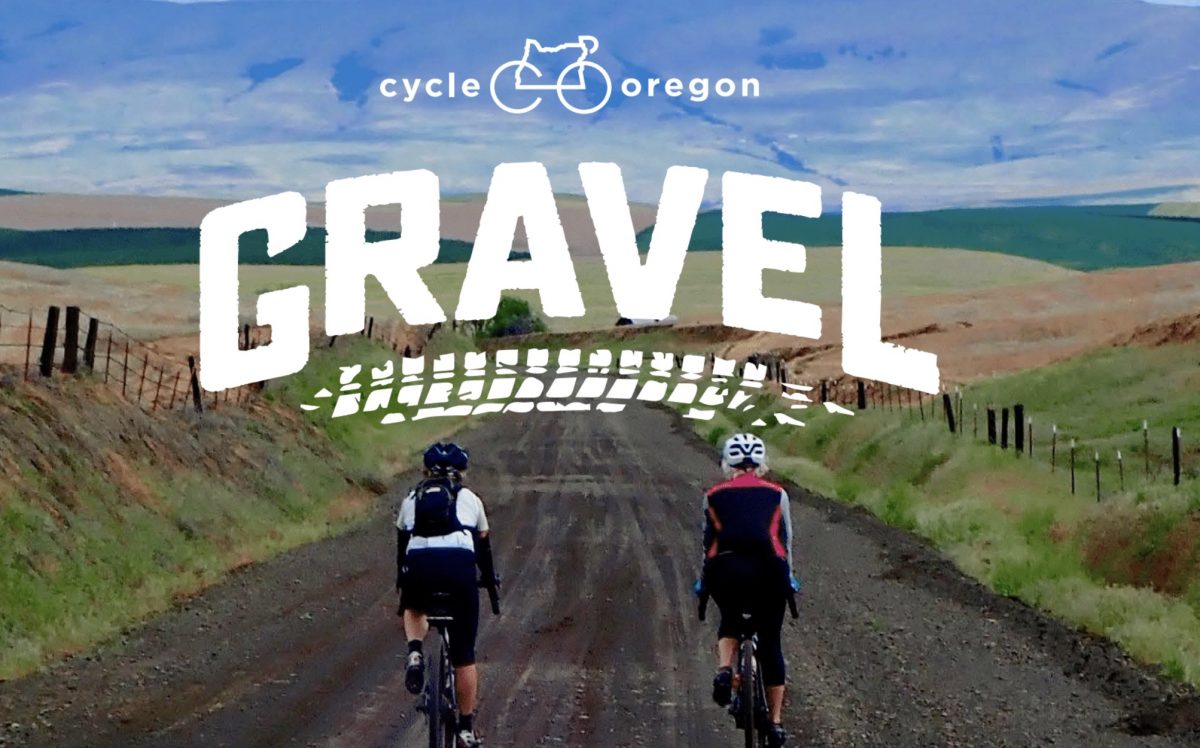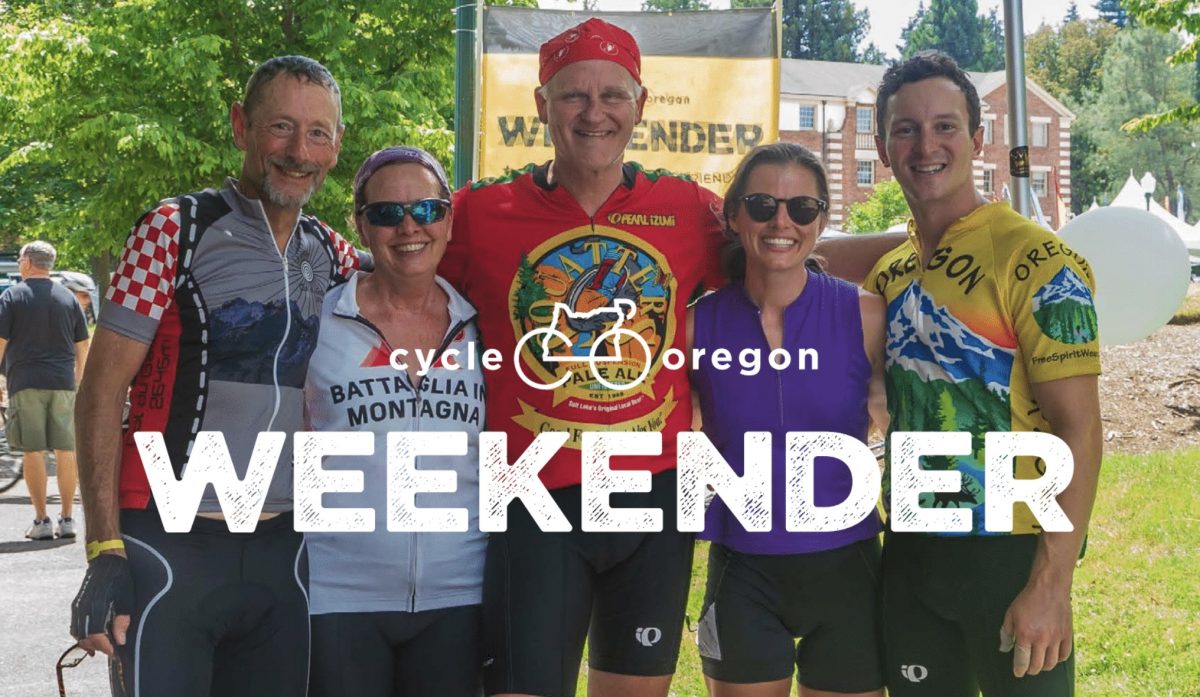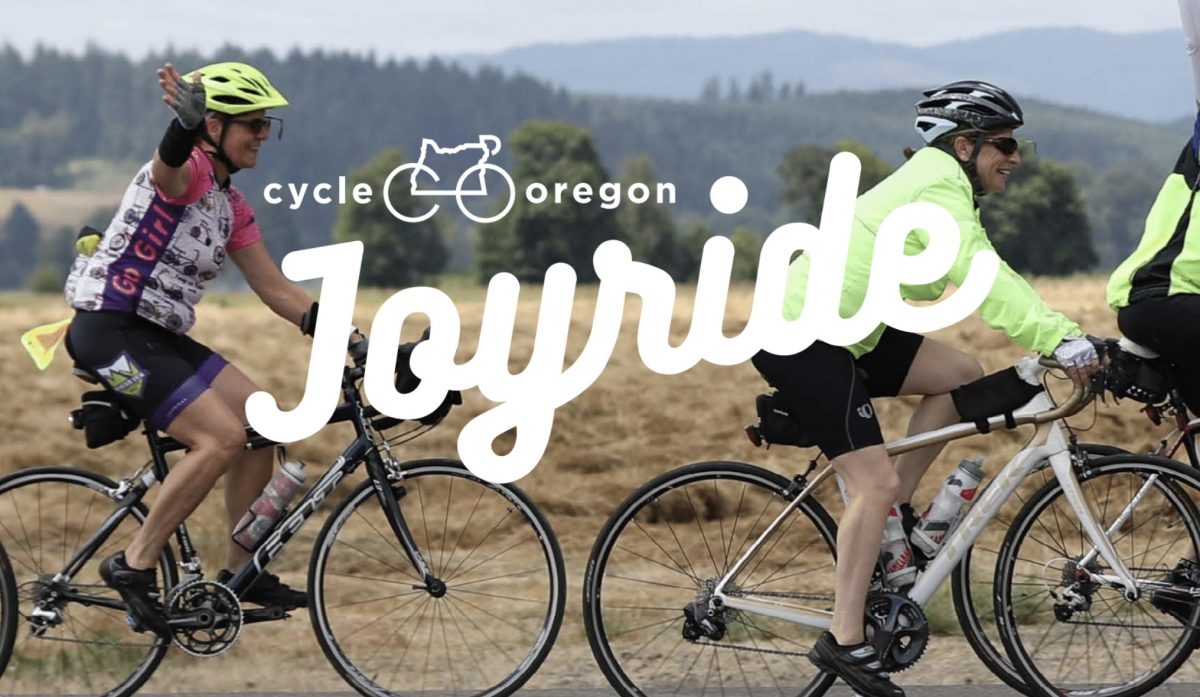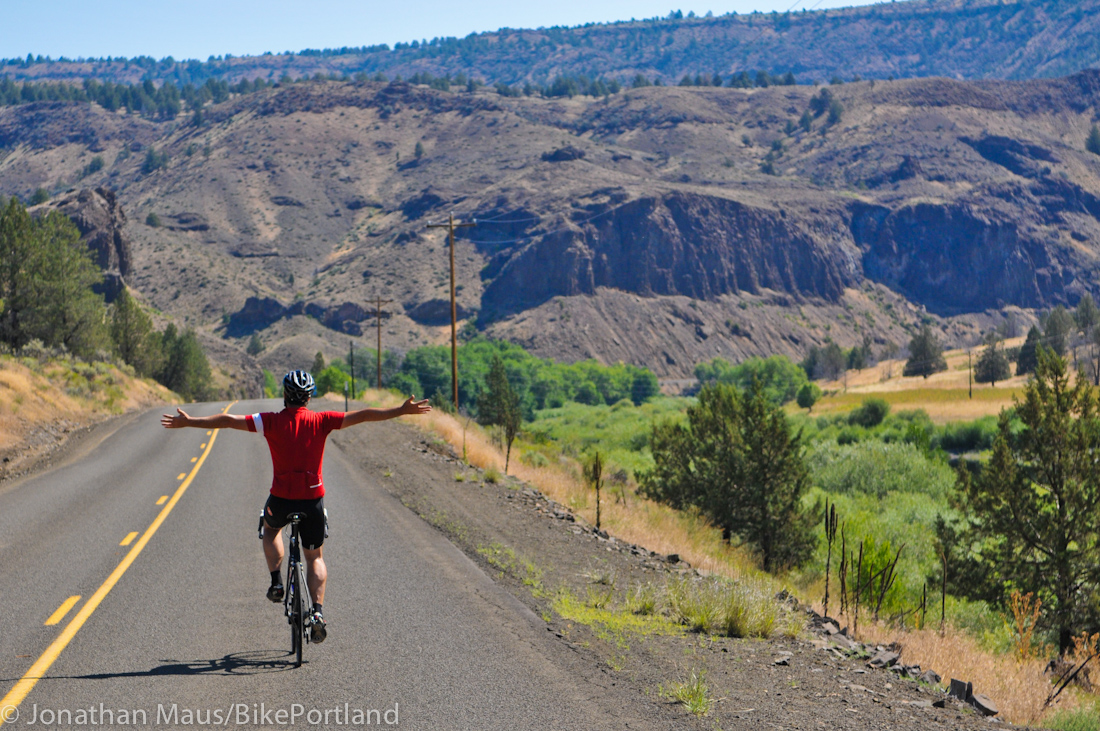
(Photo © J. Maus/BikePortland)
“We want to pivot and be relevant with today’s cycling community – and get back to some of our roots.”
— Steve Schulz, Cycle Oregon
Cycle Oregon’s mission of boosting rural communities and connecting spandex-clad urbanites to the people to live in them has never wavered in its over three decades of existence. But in reality, the event has lost some of its service-oriented focus over the years. Event organizers have become so good at their jobs of creating amazing camp vibes (with excellent live music, catered meals, and free-flowing wine and beer) that most people never leave its confines. It doesn’t help that tough routes and long days in the saddle don’t give most riders any time to soak up local culture and make those important connections to local people (and other riders) that are so important to the Cycle Oregon experience.
This year will be different.
At the annual kickoff event held tonight in southeast Portland, Cycle Oregon announced that its flagship, seven-day ‘Classic’ ride (September 12-19) will have several key changes for 2020.
But first, the route: Cycle Oregon’s 32nd annual Classic (September 12-19) will head east to the iconic Painted Hills and will include stops in John Day, Monument, Fossil, Mitchell, and Dayville. Riders will enjoy epic roads and vistas that include the Painted Hills and John Day River valley. The total mileage will range from 272 to 443 miles with an elevation gain between 15,280 and 35,245, depending on your choice of routes. Gravel lovers will find a total of 60 miles of optional unpaved detours. (Scroll down for day-by-day stats.)
Which brings me to the big changes this year. Organizers will let riders customize their week like never before. In addition to more route options than ever, the Classic will include two layover days (instead of the usual one), which will give riders a greater chance to participate in community service projects or get more fully immersed in off-the-bike activities (like a hike in the John Day Fossil Beds perhaps). More layover time and more route options mean you can spend way less time on the bike and more time connecting with locals and soaking up the amazing small towns.
Advertisement
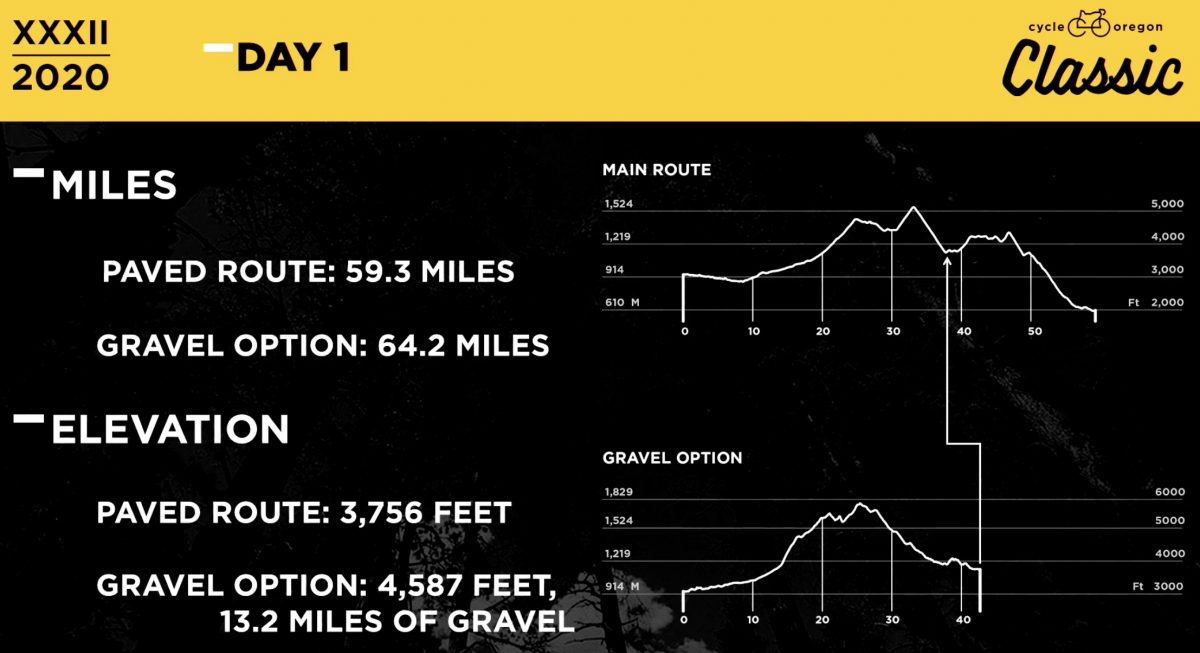
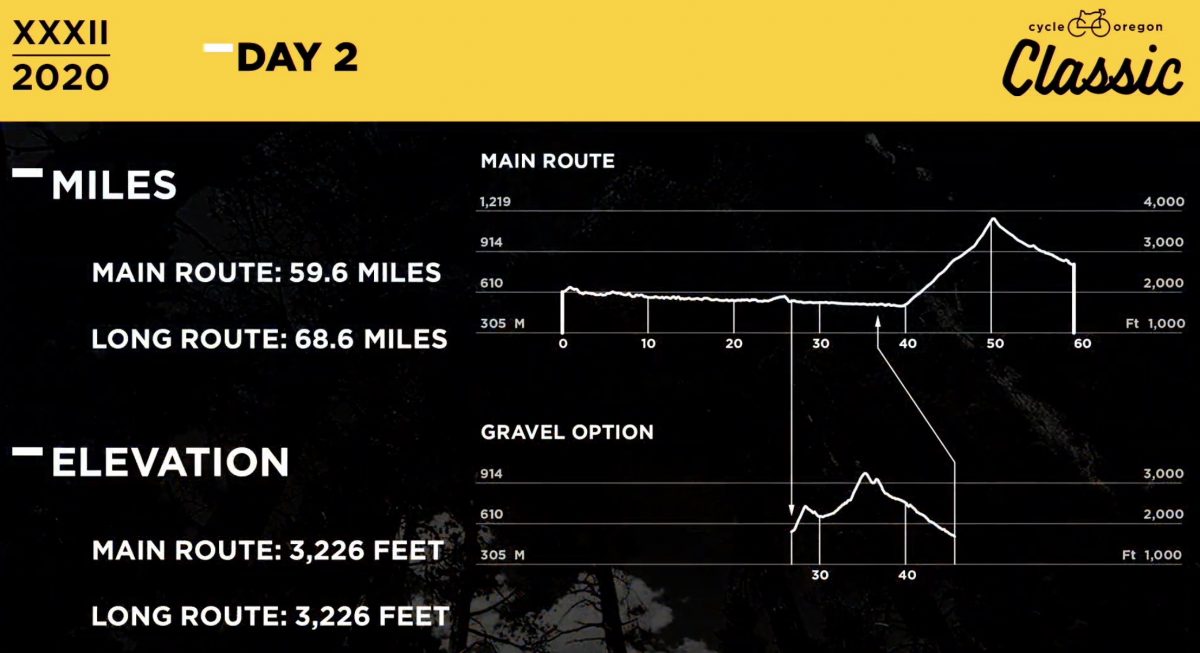
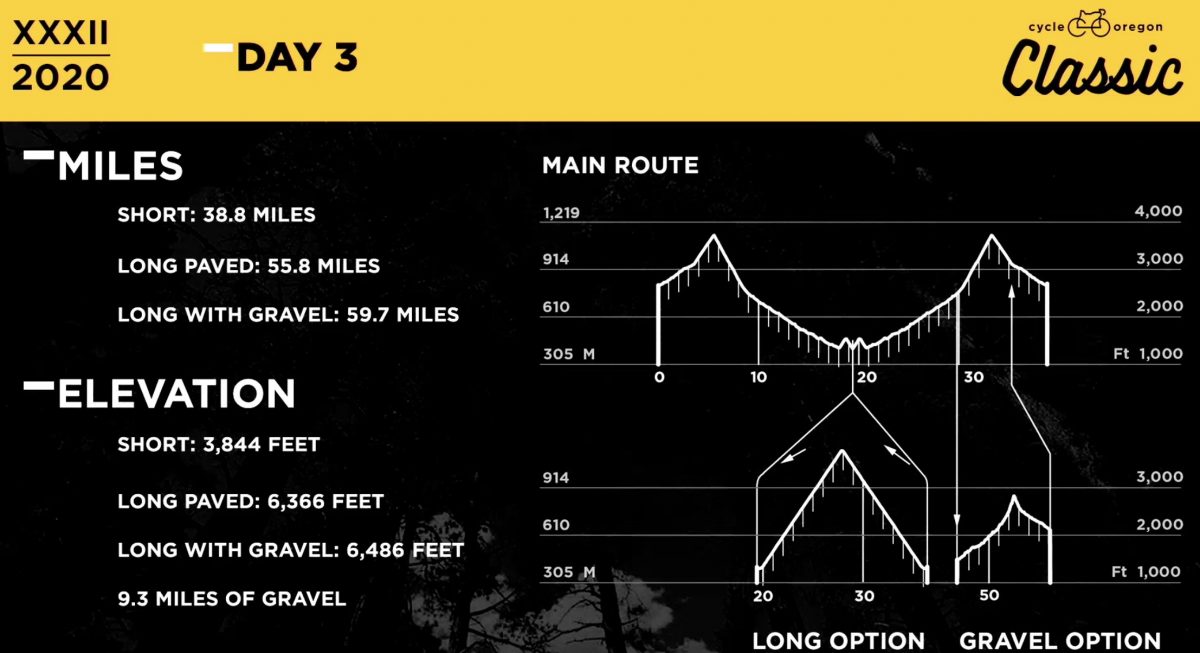
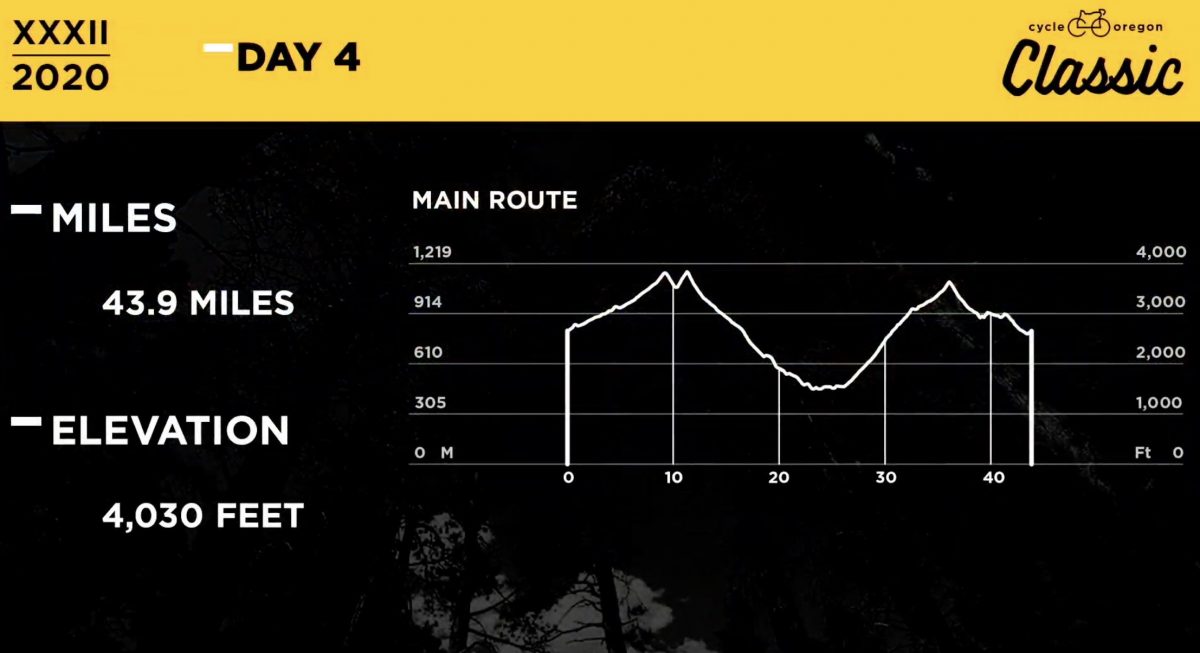
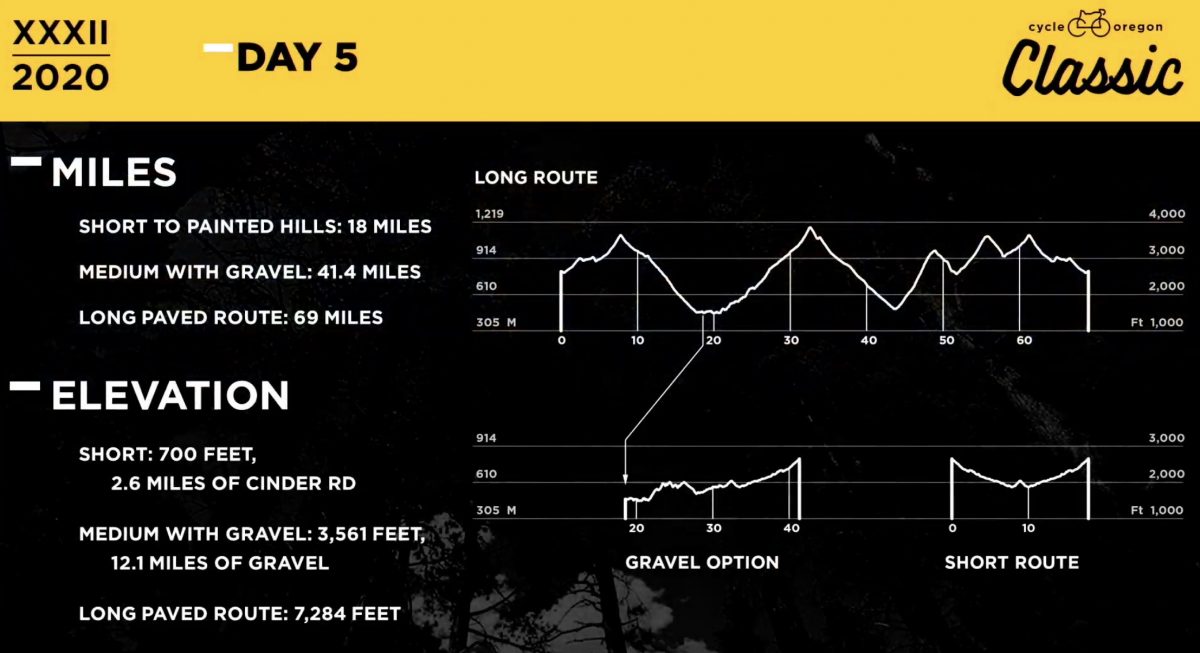
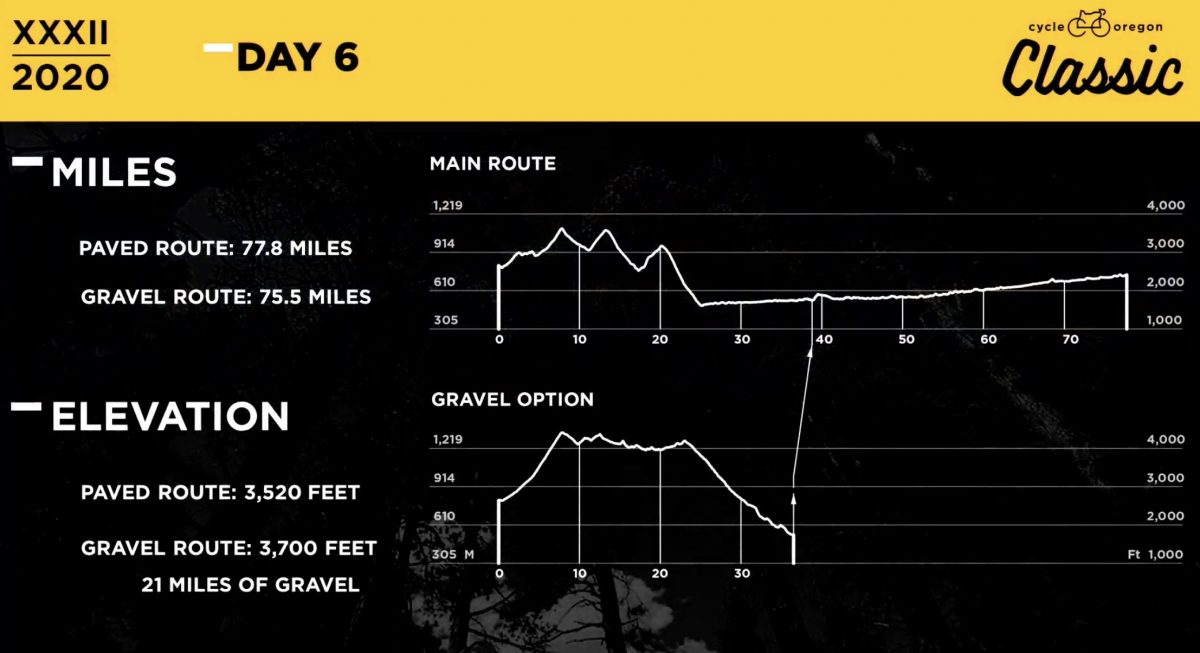
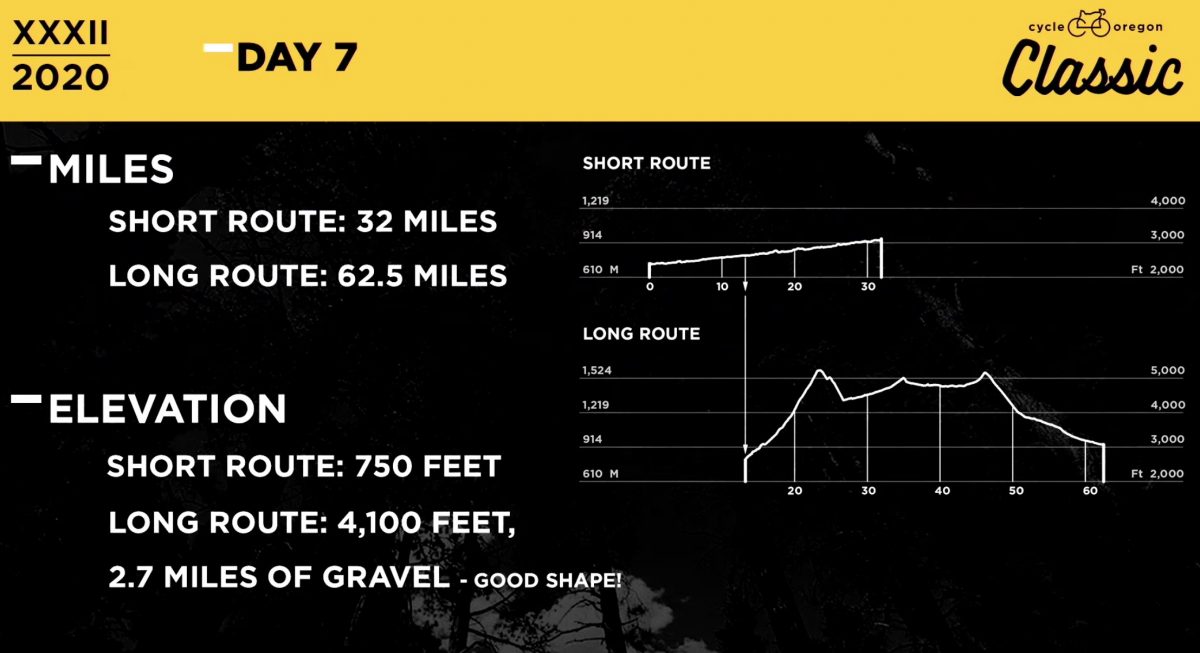
Cycle Oregon Executive Director Steve Schulz says he wants the event to be accessible to more people. “The bike industry is changing and we want to pivot and be relevant with today’s cycling community – and get back to some of our roots.”
Schulz says they haven’t lined up specifics yet, but talks have already started with residents of Mitchell and Fossil to do projects there. He sees working together to accomplish something as a way to bridge people who have very different backgrounds and lives. “I want to figure out how to bridge people together and what our commonalities are. When people from from host communities and visitors come together, the often figure out they’re not so different after all.”
And it seems to be working. Schulz said at the kickoff event tonight that 500 people have already registered for the Classic — 20% of which are first-timers.
In addition to the Classic, Cycle Oregon will host three other rides.
The Gravel event (May 15-17) will be based at the Wasco County Fairgrounds in Tygh Valley. Routes will include roads in the foothills of Mt. Hood and along White River Canyon. The base camp will have ample room to have everyone and their vehicles all in one place — unlike last year at Dufur City Park where the site was very spread out.

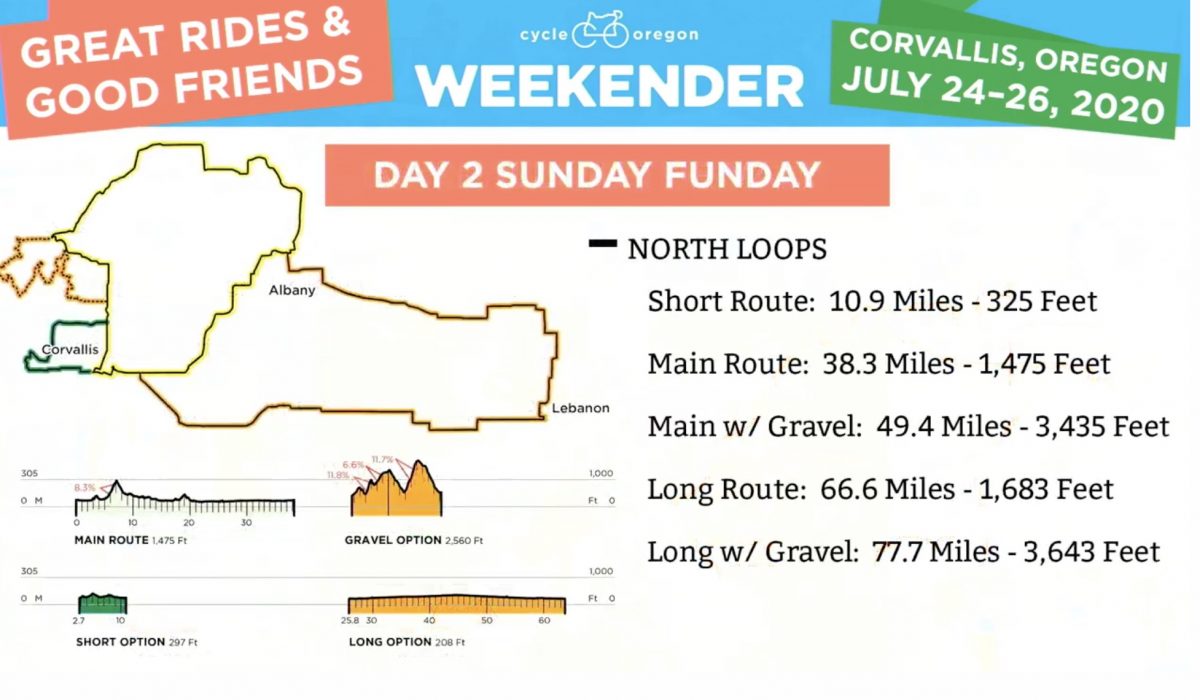
The Weekender (July 24-26) event is back after a one-year hiatus. Billed as the perfect mini-vacation for families or groups of friends with a “summer festival vibe”, it will be based on the campus of Oregon State University in Corvallis.
The one-day Joyride (June 20) is just for women and will return to the town of Independence in the heart of the Willamette Valley. Riders can choose between routes of 18, 40 and 64 miles and expect all the fully-supported touches we’ve come to expect from Cycle Oregon.
More than just a ride production company, Cycle Oregon is a nonprofit that benefits the communities it rides through. Their Cycle Oregon Fund has awarded over 325 grants totaling $2.3 million over the years. One of those grants was $100,000 to help preserve 1,791 acres of land adjacent to Wallowa Lake. Earlier this week, Oregon Public Broadcasting reported that the sale finally went through. Cycle Oregon was one of several groups (including Oregon Parks and Recreation) that helped complete the $6.5 million sale on behalf of Wallowa County. The land will now be set aside for conservation and limited access recreational trails.
Asked about the Wallowa sale this week, Schulz shared that he was proud to help catalyze momentum that resulted in the sale. “And just think, all you’ve got to do is ride your bike and we’re able to do stuff like this.”
To register and learn more about this year’s Classic and all Cycle Oregon’s rides, check out their website. (Note: 2020 ride maps, details, and registration links won’t be available until 9:00 pm on Wednesday, January 29th.)
— Jonathan Maus: (503) 706-8804, @jonathan_maus on Twitter and jonathan@bikeportland.org
— Get our headlines delivered to your inbox.
— Support this independent community media outlet with a one-time contribution or monthly subscription.



